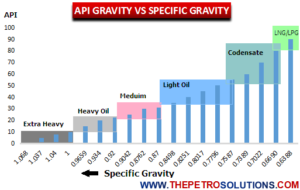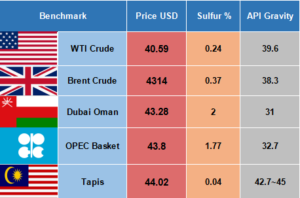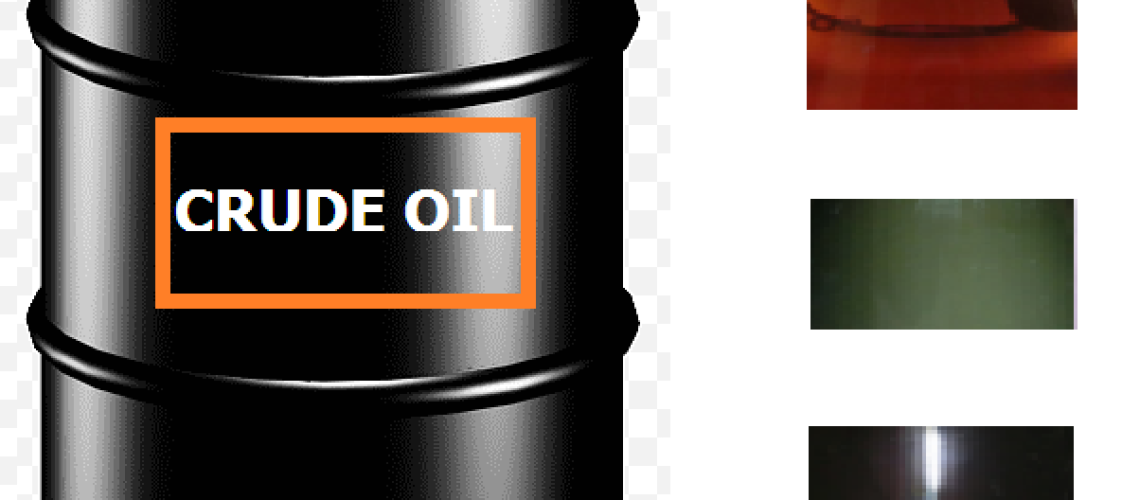Crude oil is a complex mixture of various hydrocarbon and non-hydrocarbon compounds. It exists in numerous forms with distinct characteristics and is categorized based on its toxicity, API gravity, volatility, chemical composition, geographical location, viscosity, and sale benchmarks. More about crude oil can be find in ” Composition of Crude Oil”
Viscosity refers to the oil’s ability to flow. Higher viscosity oils do not flow as easily and therefore take more energy and effort to pump from the ground.
Volatility describes how quickly and easily the oil evaporates into the air. Higher volatility oils need additional processes to control their environments during extraction to ensure that as little oil as possible is lost.
Toxicity refers to how poisonous and harmful the oil is to the environment, wildlife, and humans during the extraction and refinement process.
Crude oil can be classified into the following types;
1. Sulfur Based Classification
Crude oil can be referred to as Sour or Sweet, based on the sulfur content. Sulfur in crude oil is an important parameter of quality. Low Sulfur crudes are high in price and better in quality.
- Sweet Crude contains less than 0.5 % Sulfur content. It is safe to transport and requires less processing to meet product specifications with fewer environmental and processing problems. Less corrosion in the refining process results in low maintenance costs and downtime.
- Sour Crude contains more than 0.5 % Sulfur content. High sulfur content can lead to high corrosion rates in the refining process. Crude that contains hydrogen sulfide is also dangerous because it poses a breathing hazard to workers during transport and processing. Fig.01.
![]()
2. Density-Based Classification
Based on density or specific gravity crude oil is classified as light, medium, heavy or extra heavy. The America Petroleum Institute compares the density of crude oil to the water which is called API gravity. If the API gravity of crude oil is greater than 10, it is lighter and floats on water; if API gravity is less than 10 then it is heavier than water and sinks. Fig.02.


- Light Crude Oil, API gravity above 31.1 and are volatile, quickly evaporates but is moderately toxic. Extra care is required for their storage otherwise lighters components will evaporate within days. It is lighter in color and has lower density and viscosity. It contains low concentrations of metals and sulfur compounds.
- Medium Crude Oil, API Gravity between 22.3 and 31.1. They generally have low volatility and a higher viscosity than light oils which leads to higher toxicity and a greater environmental impact during processing.
- For Heavy Crude Oil, API gravity is between 10 and 22.3 degrees. It has little or no lighter components like LPG or Naphtha. These are the most vicious and least volatile as well as the most toxic. It generally has too much carbon, not enough hydrogen, and is hard to refine. It contains high amounts of Asphaltenes and resins.
- Extra Heavy Crude Oil: API gravity less than 10. Extra-heavy can also be called bitumen. It is so thick that it must be diluted to transport and is converted to synthetic crude. They are non-volatile and have high molecular weight fractions of crude.

Relationship of API Gravity/Specific Gravity with Viscosity

3. Sale Benchmarks Classification
Oil benchmarks or references are used to determine the price of crude oil in the markets. There are innumerable benchmarks but famous ones are West Texas Intermediate oil, Brent blend, Dubai-Oman, Tapis, OPEC Basket, etc.
- West Texas Intermediate (WTI) is primarily used in the USA and is a high-quality, light-sweet crude oil. It is a light crude with an API gravity of 39.6 and Sulfur < 0.24 %.
- Brent Crude is primarily used in Europe for crude oil pricing. It is a light and sweet crude oil with an API gravity of 38.3 and 0.37 % sulfur.
- Dubai-Oman is used for pricing Persian Gulf crude oil. This crude is heavier and sour as compared to Brent and WTI. This trades the average price of Dubai and Oman crude. It has an API gravity of 31 and 2% Sulfur.
- OPEC Basket is the average price of crude oil streams from the 13 OPEC members. Owing to having the biggest oil reservoirs OPEC significantly affects the pricing and supply of the world crude oil. It has a 32.7-degree average API gravity and 1.77 % sulfur.
- Tapis is a Malaysian crude oil and is used as a benchmark in Singapore. This is very light (API Gravity, 42.7~45) and sweet (0.04 % sulfur) crude. Fig.06 shows a current price comparison, 17 July 2020.

4. Chemical Classification
Crude oil may be classified by the relative enrichment of the four hydrocarbon groups or series. The concentration of different components is determined by distillation at a high temperature of 250~300 ̊C.
- Paraffinic oils are rich in straight-chain and branched paraffin hydrocarbons. They are lighter and are good to produce lubricating oils.
- Naphthenic crude oils contain mainly naphthenic components of more than 50 %.
- Paraffinic-Naphthenic Oil can have equal amounts of Paraffins and naphthenes which together make up more than 50% of the crude. Both of these components dominate the overall composition.
- Aromatic intermediate Oil has an equal amount of Paraffins and naphthenes, which total less than 50% and the composition is dominated by the aromatics and asphaltenes.
- Aromatic crude oil has more than 50 % aromatics.
- Asphaltic Crude Oil is non-evaporate and has high molecular weights. They are insoluble in paraffin and soluble in aromatics. There are 6~15 numbers of aromatic rings in the asphalts. Its presence in crude creates numerous problems for oil processing, blending, storage, and transportation.
- More about crude oil Composition please view my previous blog ” Composition of Crude Oil”
5. Synthetic Crude Oil
Also called Syncrude does not occur naturally and is produced by upgrading bitumen or extra-heavy oil. As extra heavy oils are upgraded or diluted into a light oil of API gravity near 30 by removing most of the heavy fractions and Sulfur. The characteristics of Synthetic crude depend upon the processes applied in the upgrading. It is then shipped to oil refineries where it is used to produce petroleum products.
6. Opportunity Crude Oil
Heavy and extra-heavy crudes are called opportunity crude. These are very cheap due to their very poor quality and provide the opportunity to earn extra profits. These are used along with normal crude oil which has the benefit of being very cheap. But at the same time processing Opportunity crude is not an easy task and may create fouling and corrosion problems.
In particular, opportunity crudes typically have high levels of naphthenic acids, sulfur, and metals and require more intensive processing to yield high-quality products. These crudes are medium to heavy (15-25° API), TAN > 0.5 mg KOH/g oil and vary considerably in properties, which relates to the high (negative)impact on plant operations and equipment leading to elevated levels of downstream corrosion. The improved desalter operation, chemical and monitoring programs, and constraint analysis can offer ways to mitigate the negative effects of such crude.
For further information, discussion and queries please comment in the box below or contact us at admin@ or follow us on Facebook & LinkedIn.






12 thoughts on “Crude Oil Classification and Benchmarks”
V.nice
Good and informative content